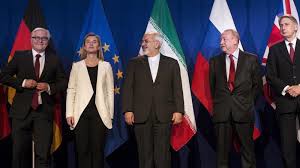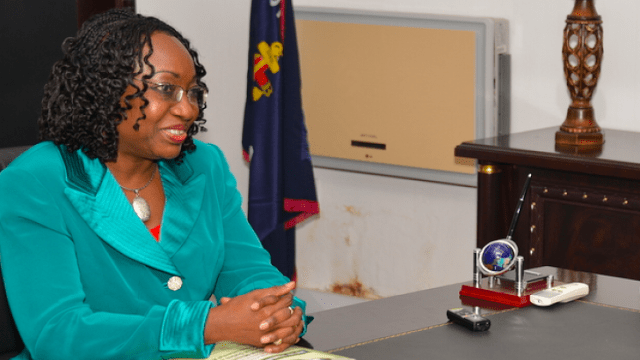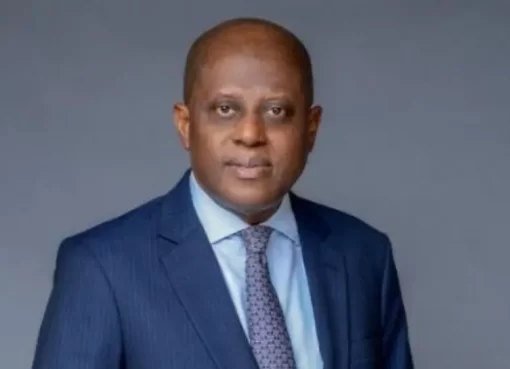
Iran and six world powers have concluded an agreement that will lift sanctions on Iran but place strict limits on its nuclear programme for more than a decade, in a historic compromise designed to stop the spread of atomic weapons and avert a major new conflict in the Middle East.
The deal, concluded in a Vienna hotel after prolonged talks between foreign ministers, binds Iran, the US, UK, France, Germany, Russia and China to a series of undertakings stretching over many years. Iran will dismantle much of its nuclear infrastructure, while the UN, US and EU will take down a wall of sanctions built around Iran over the past nine years.
Barack Obama said the agreement was the best available option to prevent Tehran from acquiring a nuclear bomb, and promised to veto any attempt by Republican opponents to undermine it. His Iranian counterpart, Hassan Rouhani, said a new phase had begun in Iran’s relations with the rest of the world.
Daryl Kimball, the executive director of the Washington-based Arms Control Association, described the agreement as among the most complex and consequential of the nuclear age: “[The agreement follows] nearly two years of intense negotiations involving seven nations, including two long-time adversaries, after more than a decade of false starts and missed opportunities.
“The deal is a major nuclear nonproliferation breakthrough that promises to prevent the emergence of another nuclear-armed state and head off a nuclear arms race in the world’s most volatile region.”
Among the conditions of the agreement are:
Iran will reduce its enrichment capacity by two-thirds. It will stop using its underground facility at Fordow for enriching uranium.
Iran’s stockpile of low enriched uranium will be reduced to 300kg, a 96% reduction. It will achieve this reduction either by diluting it or shipping it out of the country.
The core of the heavy water reactor in Arak will be removed, and it will be redesigned in such a way that it will not produce significant amounts of plutonium.
Iran will allow UN inspectors to enter sites, including military sites, when the inspectors have grounds to believe undeclared nuclear activity is being carried out there. It can object but a multinational commission can override any objections by majority vote. After that Iran will have three days to comply. Inspectors will only come from countries with diplomatic relations with Iran, so no Americans.
Once the International Atomic Energy Agency (IAEA) has verified that Iran has taken steps to shrink its programme, UN, US and EU sanctions will be lifted.
Restrictions on trade in conventional weapons will last another five years, and eight years in the case of ballistic missile technology.
If there are allegations that Iran has not met its obligations, a joint commission will seek to resolve the dispute for 30 days. If that effort fails it would be referred to the UN security council, which would have to vote to continue sanctions relief. A veto by a permanent member would mean that sanctions are reimposed. The whole process would take 65 days.
Iran’s foreign minister, Mohammad Javad Zarif, who has been leading his country’s delegation in Vienna, described the agreement as a “win-win” solution but not perfect.
“I believe this is a historic moment,” he said. “We are reaching an agreement that is not perfect for anybody but is what we could accomplish. Today could have been the end of hope, but now we are starting a new chapter of hope.”
Francis Mogherini, the EU’s foreign policy chief, said the agreement would “open the way to a new chapter in international relations” and show that diplomacy can overcome decades of tension. “This is a sign of hope for the entire world,” she said.
Israel’s prime minister, Binyamin Netanyahu, who has faced mounting criticism at home over his handling of the diplomacy around Iran, moved pre-emptively to denounce the deal even before the details had emerged.
Heading a chorus of condemnation from Israeli politicians – including many members of his rightwing coalition – he said the agreement was a capitulation and a mistake of historic proportions. The deal was also denounced by the hardline former foreign minister Avigdor Lieberman as “a total surrender to terror”.
Yair Lapid, head of the Yesh Atid party, said Netanyahu’s campaign over Iran had been a “colossal failure”.
Later this month, the UN security council will pass a resolution incorporating the agreement and its five annexes as an attachment, but it will be 90 days before it enters into force, to allow for it to be reviewed domestically in the US and Iran. At that point, Iran will carry out its part of the bargain, dismantling nuclear infrastructure. Western officials say that might take several months, but a senior Iranian official said his government was ready to act much faster.
“We think that in a matter of weeks not months we will be able to finish what we have committed to,” the official said.
A trial by fire under the highly sceptical scrutiny of the US Congress will be the biggest challenge to the deal’s survival. The deal will enter a period of limbo for up to 82 days: 60 for Congress to review it and a further 22 for a first vote and possibly a second in the event of a presidential veto.
On Tuesday Obama promised to use his veto on any domestic attempts to undermine the deal. “I am confident that this deal will meet the national security needs of the United States and our allies, so I will veto any legislation that prevents the successful implementation of this deal,” he said.
“We do not have to accept an inevitable spiral into conflict, and we certainly shouldn’t seek it.”
The president said the agreement was not based on trust with Tehran, which he acknowledged is a longtime enemy of the United States, but rather “built on verification”.
He added: “This deal meets every single one of the bottom lines we established when we achieved a framework earlier this spring. Every pathway to a nuclear weapon is cut off. And the inspection and transparency regime necessary to verify that objective will be put in place.”
Iran’s Majlis will also take time to debate the deal, but without a fixed timetable. Only if and when the agreement survives both processes will it start to be implemented.
Iran will start dismantling centrifuges, shipping out or converting its stockpile of low enriched uranium (LEU), removing the core from its heavy water reactor in Arak and start intensive work with the International Atomic Energy Agency on resolving unanswered questions about possible past work on nuclear weapons design.
At the same time, Obama will issue presidential waivers suspending US economic and financial sanctions, and the EU will vote to lift its oil embargo and banking sanctions. The UN resolution would lift six layers of international sanctions, except for an arms embargo and restrictions on missile technology.
None of the sanctions relief measures will take immediate effect, but will be conditional on the IAEA verifying that Iran has carried out all its promised steps. The aim is to have this done by the end of the year.
At that point, $100bn in Iranian assets around the world will be unfrozen. Ordinary Iranians, however, will have to wait several months before feeling the economic benefits.
Rouhani will hope the influx of money into the ailing economy will come in time for the voters to reward reformists at the parliamentary elections in 2016, and help further change the country’s course.
“Today is an end and a beginning … an end to baseless claims and a beginning for a new phase in international relations,” he said on Tuesday.
“Today we are at an important juncture in the history of our country and revolution. A new chapter has begun … it shows problems in the world can be solved through less costly ways.”
A preliminary outline of the deal was agreed in principle in Lausanne in April, but it left many of the details unresolved and Iran’s supreme leader, Ali Khamenei, said his country would only recognise a full and comprehensive agreement.
Iran has also pledged to cooperate with an IAEA investigation into evidence of past experiments in nuclear weapons design, mostly dating back over 12 years. The agency’s director general, Yukiya Amano, signed an understanding with Iran’s nuclear chief, Ali Akbar Salehi, on Tuesday morning, in which both undertook to complete the investigation by the end of the year.
The IAEA has not committed itself to coming to definite conclusions in that period. It describes the agreement as a “road map” that Amano said “provides for technical expert meetings, technical measures and discussions”. A separate arrangement would be agreed for the IAEA to visit a particularly controversial site, a military base called Parchin.
Within a few months, the IAEA verification that Iran has shrunk its nuclear programme will trigger the third phase of the agreement, in which multiple layers of economic and financial sanctions are lifted, and about $100bn in Iranian assets abroad will be unfrozen.
There are still many things that can go wrong. The deal could be repudiated by the US Congress with enough Democratic defectors to override a presidential veto. That domestic battle will draw in America’s allies on either side.
Netanyahu’s Israeli government is lobbying heavily for the deal to be rejected, as are the Gulf Arab monarchies. The western Europeans will try to counter their influence on US public opinion and Congress.
The agreement could also fall apart over the question of Iranian cooperation with the IAEA inquiry into past weaponisation studies, or stumble over a disagreement over whether IAEA inspectors can enter a site run by the Iran’s Revolutionary Guard.
But the deal’s supporters believe that if it can survive, the agreement has the potential to redraw Iran’s relations with the US, dampen the likelihood for another war in the Middle East and set a new standard for negotiated non-proliferation, stopping the spread of nuclear weapons in the Middle East and beyond.(The Guardian)






